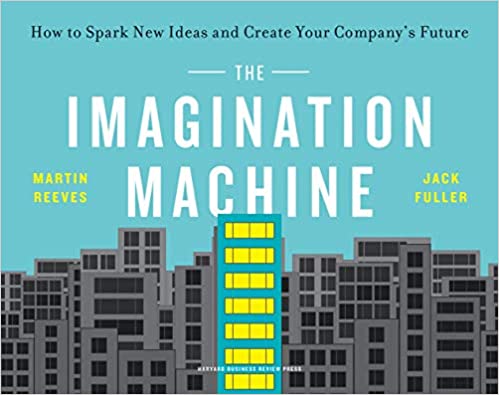The Imagination Machine
How to Spark New Ideas and Create Your Company's Future


Martin Reeves is a Senior Partner and Managing Director at the leading strategy consultancy, BCG, and a globally recognised thought-leader. He is Chairman of the BCG Henderson Institute, the consultancy's internal think-tank. His current research themes include organisational stamina, business ecosystems and a template for the new learning organisation. Jack Fuller is a Special Project Manager with the Henderson Institute; he holds a degree in neuroscience from the University of Melbourne and a doctorate in theology. He writes on strategy games, transformation, play and goal-setting.
Business life-cycles continue to get ever shorter – outperformance quickly fades to the mean. In the 1990s only 10% of top quartile corporate performers were average performers 5 years later, whereas today 90% of outperformance has decayed within 5 years. There is a consistent imperative to reinvent your organisation, to continually have the hunger to do things differently – entrepreneurially. Entrepreneurship is often scrappy and chaotic, which is anathema to highly structured organisational behemoths – so there is an inevitable tension between the internal culture and the external context (which is closer to scrappy and chaotic, with events and issues such as the pandemic, climate change, inequality disrupting carefully laid plans).
Imagination is both the root of and the route to new solutions – but as the authors note, those solutions almost inevitably bring the next set of challenges too. First though we need to reorganise the organisation to harness our human ability to enable higher-level cognition.
This book explores this cognitive dimension of humanity as it relates to the organisation and its ability to imagine and reimagine itself. Like so much of the content we champion here at Ideas for Leaders, it starts from the recognition that 19th and 20th century industrial performance was founded on treating humans as units of production – human resources – like a cog in well-oiled machines. In the 21st century the rise of Artificial Intelligence (AI) to do mundane cognitive tasks will reduce the need for supervision and first-level management roles, so freeing-up people to use their higher cognitive skills for the benefit of the organisation and its wider ecosystem. As the authors say: "Businesses will need to become much more knowledgeable about and more competent at extracting value from unique processes in human brains". They liken this to the early days of oil-prospecting where people 'dug around and occasionally struck oil' but nowadays the process is much more precise and technical – we are still in those early days of neuro-prospecting, but it will become much more sophisticated as we learn more about the holistic way our bodies operate.
Imagination is, the authors say, 'counterfactual thinking'. The ability to see in your mind's eye something that is not yet here. Business tends to deal with the present and immediate past – the things that are here. The human mind can play and recombine things virtually – in a way that, as far as we know, no other animal can, and AI is still limited in its ability to. Imagination is different from dreaming though – as to imagine something it needs to have those real elements to it, while dreams have no constraints of an underlying reality or structure to them, "in imagining we alter some parts of reality while remaining grounded…".
The book is split into six core chapters that track the journey of an idea:
Reeves and Fuller pull together an enormous breadth of research, insight and investigation in this relatively short book – just 156 pages, though it is imaginatively published in a trimmed landscape quarto – and is filled with cartoons, photos and diagrams to lighten the textual load.
The case studies from LEGO to Amazon by way of the first burger franchise,White Castle Systems, and many others, frames the theoretical and observed best practices as well as enlivening the narrative. As you would expect from consultants there is no shortage of frameworks and diagnostics and instructional thinking.
Whether the book breaks new ground is debatable, but it consolidates a lot of disparate concepts on innovation, organisational behaviour and neuroscience, with a highly readable historical narrative – and presents the reader with a clear set of ideas about ideas, how to get them and what to do with them.
Title: The Imagination Machine
Author/s Name/s: Martin Reeves and Jack Fuller
Publisher: Harvard Business Review Press
ISBN: 978-1-647-82086-2
Publishing Date: June, 2021
Number of Pages: 156
Author Knowledge Rating: 1-5 (based on their years of experience, academic expertise in subject areas, and exposure to cross-functional thinking in the area)

















































































Readability: 1-5 score(1=dense and v academic; 5=frantic; page turner)




































































































Appropriate Length: (1=could have been written in 25% of the length;5=could have been longer)




































































































Core Idea Value: (1=nonsense (or entirely esoteric); 5=game-changer)

















































































